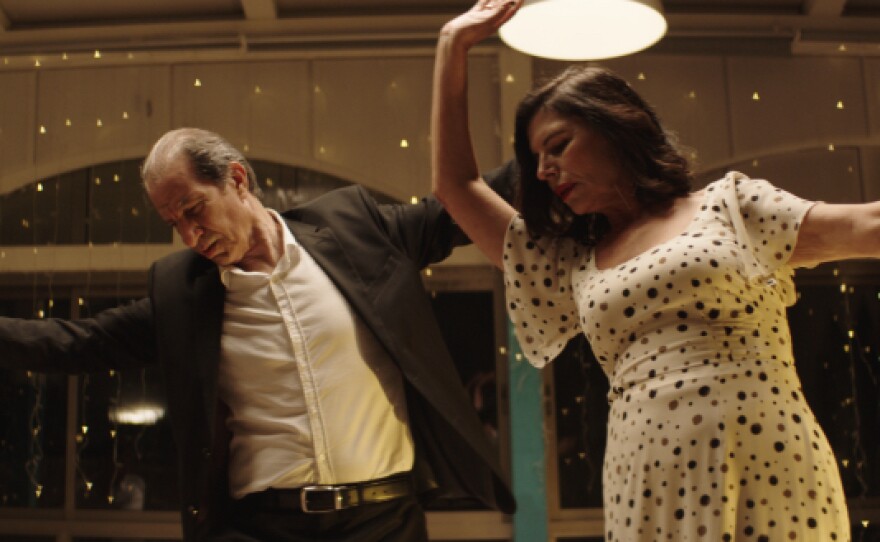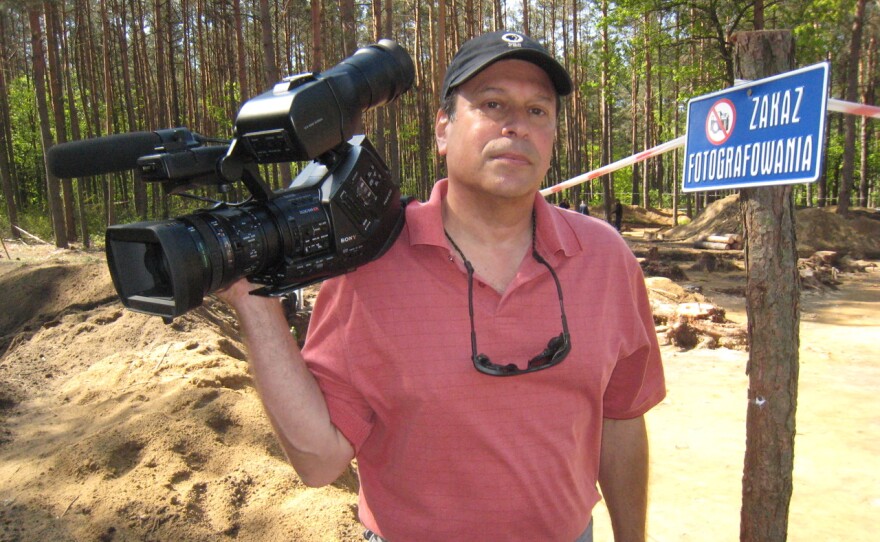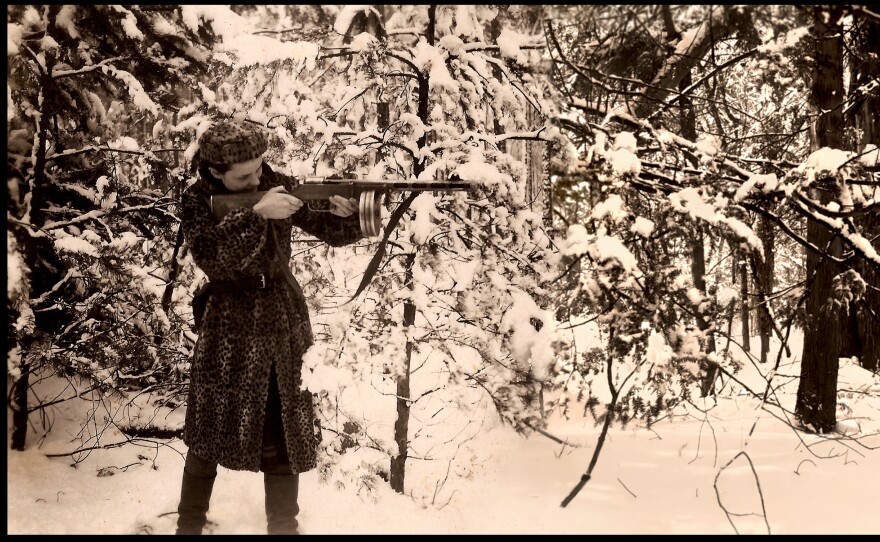The San Diego Center for Jewish Culture presents the 33rd San Diego International Jewish Film Festival (SDIJFF), which will showcase 35 feature films over the next 17 days in-person at the David and Dorothea Garfield Theatre, and then run a virtual festival from Feb. 27 to March 3.
SDIJFF showcases the best contemporary Jewish films and documentaries from around the world. The films were selected to represent the Jewish experience.
Festival chair Christina Fink is proud of the range of films starting with the opening night comedy from Israel, "Karaoke."

"A good comedy can be very tough to find," Fink said. "A lot of comedy does not translate from one culture to another but 'Karaoke,' has won many awards in Israel and it is a darling comedy, it shouldn't be missed."
The festival also showcases a number of documentaries that find new stories to tell about the Holocaust.
"I am also continually astounded by what we call 'nuggets of new information,'" Fink said. "It never ceases to amaze me of the new information these films find about World War II. We work very hard to make that a quality and a high standard in selecting this particular genre of films because we know it's a very sensitive subject. But yes, we found new stories, new information, new ways of showing Holocaust stories, new voices to be heard."

'Deadly Deception at Sobibor' makes world premiere
One of those new voices is a Moroccan-Israeli archaeologist named Yoram Haimi whose excavation of the Nazi death camp at Sobibor led filmmaker Gary Hochman to make the documentary "Deadly Deception at Sobibor."
"Yoram visited the site in the early 2000s, and he thought he would find a museum and he would find records of his family," filmmaker Gary Hochman explains. "When he got there, all he saw was a forest, an open field, a statue and a 1960s memorial at the edge of this open field, which is where the mass graves were supposed to be. Yoram was perplexed by the whole thing. So he got ahold of a colleague by the name of Wojciech Mazurek, a Polish archaeologist, and together they petitioned the government for permission to excavate the site. Yoram reasoned that a place where a great crime took place is essentially a crime scene."

At this crime scene Haimi uncovered artifacts that reveal new information about the camp and the victims. He uncovers a number of metal I.D. tags that reveal names, towns, and dates of birth of victims, many of whom were young children. The artifacts are emotionally potent as Dutch archeologist Ivar Schute notes.
"The whole story, which is a story about big numbers, it's more or less impossible to understand, but when you see those items, the whole story becomes quite personal," Schute says in the documentary. "Then it's very easy to take in the whole story and to understand the whole story because you come on a personal level. It's not an abstraction. It's not a story of big figures anymore. It's a story of one person."
And that is where the film makes its most vivid impact. Research leads the team to find photos of the young victims and to personalize those numbers in a heartbreaking way. But the film also manages to find joy in unexpected ways that I do not want to spoil.
The film also speaks with one of the survivors of Sobibor who took part in a successful revolt. But for Hochman, the revolt is not the main story.
"The revolt is the reason that the Nazis hid their crimes," Hochman said. "It's a complicated story because essentially the Nazis created a factory of death. For a year and a half, they killed Jews, up to 250,000 people. And the Jewish slave laborers knew that their time was coming, and they decided to act. They killed eleven guards. More than 300 people fled past the barbed wire fencing, through a minefield, and into the woods. Let me put it this way, from the Nazi perspective, this revolt was a disaster. First of all, the people that they were trying to get rid of were supposed to be inferior, people who could be handled very easily by a few guards. And now there was a revolt. And once all of these people fled, the Nazis had a big problem. And the big problem was trying to erase their crime scene. And so they created the ultimate deception. They actually began Holocaust denial at places like Sobibor and other places where things went wrong, and they leveled the place."
As Holocaust survivors die, there are fewer eye witnesses to the events that happened. That's why Hochman believes documenting the Holocaust and teaching about it is vital.
"I think education about the Holocaust isn't just important because it's a horrific, historic event. I think it's important because I think people forget that a place like Sobibor is the outcome of violent bigotry," Hochman said. "And for violent bigotry to exist, you have to have public hatred. And, boy, do we have a lot of that in our current lives. If you don't check the blind hatred, the divisive rhetoric that's talked about on a weekly basis, regardless of whether it has to do with Jews or any other minority group that exists, this is the basis for how the Holocaust happened in the first place."
Other top documentaries
In addition to "Deadly Deception at Sobibor," SDIJFF features another documentary about Jewish resistance, "Four Winters." The film not only interviews a number of Jewish partisans but uncovers remarkable archival material to present a different perspective than is usually seen of World War II.

In the film Faye Schulman states: “All I owned was my camera, leopard coat, rifle and a grenade in case I’m captured ... the pillow was the rifle, the walls were the trees and the sky was the roof."
Schulman's photos, including ones of her in her leopard coat, are amazing documents that help us now see how some of the 25,000 Jewish partisans lived, and fought back against the Nazis and their collaborators from deep within the forests of Eastern Europe, Ukraine and Belarus.
The image of her in her leopard coat with a rifle is just so striking. It sums up the contrast between the life she previously led and the one she was forced to lead. It also conveys her ability to adapt. Plus the fact that she had the determination to take these photos under such harsh conditions is impressive and provides a compelling visual documentation. The interviews are also a brilliant historical record that offers powerful first person narratives of survival, heroism and resilience.
Another pair of worthwhile documentaries are "Searching for Gerda Taro," about the female war photographer who died covering the Spanish Civil War, and "Finding Light," about a dance inspired by the story of one Holocaust survivor.
SDIJFF runs through Feb. 26 in person at the Garfield Theatre in La Jolla, and then virtually from Feb. 27 to March 3.






